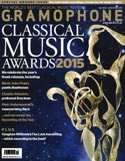Texte paru dans: / Appeared in: |
|
|
Outil de traduction (Très approximatif) |
|
|
Reviewer:
Lindsay Kemp
Steven Isserlis makes no attempt to make his cello imitate the wispy resonance of the gamba, instead claiming the music for his instrument with vigorously articulated lines, robust technical athleticism and ravishing cantabile. Indeed, it is this wondrous singing quality – which never loses its bearing and employs vibrato only as one of its discreet expressive elements – that stands out in these performances, its presence felt above all in the slow movements, of course, but also constantly governing the sense of line in busier ones. Also telling is the profound awareness of architecture and the interrelationship of movements, for instance in the gathering joy with which the finale of BWV1027 picks us off the floor following the sudden shaft of desolation that has ended the preceding Andante (astutely likened by Isserlis to ‘Es ist vollbracht’ from the St John Passion). In short, these are fullblooded but sensitive readings which, far from being contrary to Bach’s spirit, seem rather to magnify it.
Isserlis is excellently partnered
at every turn by Richard Egarr’s bustling harpsichord-playing, though I would
have liked a greater presence for it in the balance to give more definition to
the unsupported bass-line. In the two non-Bach items – sonatas probably
originally conceived for violin and continuo by Handel and Scarlatti (the latter
working up a fiery head) – the balance works better, with Egarr typically
inventive and Robin Michael’s lightly drawn doubling of the bass adding just
enough weight without drawing attention to itself. Otherwise, they show the same
quality in performance as the Bach – namely first-class.
|
|
|
|
|
|
Cliquez l'un ou l'autre
bouton pour découvrir bien d'autres critiques de CD |
|




